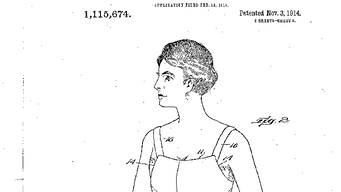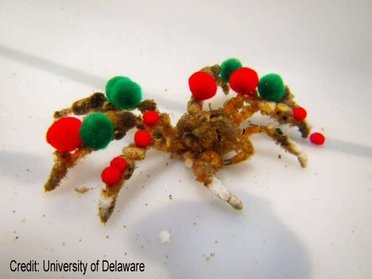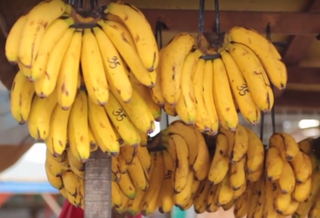Feel free to comment to one another but note that we will not be able to answer questions regarding existing posts.
~Ken Jr.
| Observations |
|
|
The author and curator of this site passed away June 2021. In his memory we will keep this site running as long as it brings value.
Feel free to comment to one another but note that we will not be able to answer questions regarding existing posts. ~Ken Jr.
3 Comments
Here in New Hampshire we have several types of owls and this is one photo that my son captured with an Olympus DSLR (digital single lens reflex) camera in his back yard. We have a difference of opinion as to which owl this is. What do you think? Maybe we have an ornithologist reading this!
 I have always respected the office of the presidency regardless of party affiliation. As an independent I have voted for both parties over time. I have tried to be an informed voter and watch the debates carefully to evaluate both candidates without criticism. Until last night! Undoubtedly this first debate was a complete train wreck with Donald Trump behaving like a toddler in a sandbox. I have never seen a president show his total disregard for the rules of debates. Constantly interrupting and his complete inability to answer questions was so apparent that he is and never has been a leader. I watched as long as I could and had to turn it off before I became totally disgusted. I began to think about the people in other countries who were watching this disaster. I am truly embarrassed for our country. For this I apologize. We can't tolerate another four years of Donald Trump so please vote and bring the presidency back to our democracy.  It is easy to say that you have important reasons to check your phone every 5 minutes and that may be true. But, too many people are checking messages, YouTube, and installed social media applications, and generally spending a lot of unnecessary time staring at a device that can be useful, habit forming, or addictive. We know that the brain can experience neuroplasticity and become re-wired to cause a repeated need to "check the phone out for the most current content"! All the more troubling is the fact that children in their pre-teens start the process very early in life and set themselves up for a long term problem. There is an excellent article in the Addictive Behaviors journal worth reading and reexamine our collective behavior here. The article can provide a better explanation than I can.  I have admitted in past posts that I have very few artistic skills and that has not changed. But I am working to learn new skills and this is my first really homemade Christmas card. I did use some stencils and added my own freehand embellishments. I used a toothpick to add the red berries on the second page of the card. But, being an inveterate inventor I made my own texture paste for the snowflakes with blue acrylic paint and had some real problems getting good results but they have a true raised texture. (I failed to show the many rejects that really frustrated me)! For all of the embossing I used my own homemade embossing powder made from Pledge floor finish. (Put embossing in the search box if you are interested in this project). I also used a modified heat set ink from Speedball which is designed for silk screening. I know that I will never catch up with my creative and innovative readers/viewers but I am trying to get better. It just take me more time! No matter how you celebrate the holiday I wish all a meaningful and loved filled time of the year, Ken.  Women have been struggling to provide comfort and satisfy fashion for as far back as early Greece. It has not been easy as fashion changes happen so frequently and either low cut or completely hidden have been in vogue. But in early in 1913 Mary Phelps Jacobs was getting ready to attend a formal affair that featured a plunging neckline and being rather large on the topside she had a problem. She did not want to wear the usual bone corset as it did not work with her gown. But with no support her sensitive parts were visible and that forced her to create a solution. She had her maid sew two handkerchiefs together and added thin straps which would be hidden by the gown. It worked and so became the brassiere. Another invention had been fostered by necessity! She wore it that night and soon began marketing and selling in well known stores and salons. From her autobiography: "It is among the objects of the present invention to provide a garment in which a number of features of novelty and utility are combined, among which are the provision of a garment which has no back and therefore does not interfere with any design of evening gown that may be chosen; one which is capable of universal fit to such an extent that for commercial handling it need be made in but few sizes, with reasonable certainty that the size and shape of a single garment will be suitable for a considerable variety of different customers; and to provide a garment which is characterized by extreme simplicity by freedom from bones so that it may be finished with laces or embroideries for wear beneath a sheer waist or diaphanous gown, and which when worn is both comfortable and cool and so efficient that it may be worn even by persons engaged in violent exercise such as tennis; and which has other advantages that are characteristic of the invention herein set forth". So, now more than 100 years later the debate continues as to bra vs. no bra. Either way, gravity will win and the choice is a simple personal decision.  As we approach the holiday season, humans around many places in the world are decorating all manner of trees, homes, and wreaths. Some even decorate their pets! And although the tradition of the colorful red green and silver tinsel only goes back as far as the late Victorian period, (late 1800's), some species other than humans have decorated themselves for much longer. A good example is the Majoid crab, also known as the decorator crab, that adds bits of algae and other bits of material to their appendages to hide from predators. Researchers at the University of Delaware wanted to determine how quickly the crabs decorated themselves, and if they did it with and without a place to hide. The experiment was fairly simple; have two separate containers, one with a habitat and one without a place to hide. Then, using wet craft pom-poms so that they would sink to the bottom of the container, the crabs were photographed every hour for 24 hours. In both containers most of the crabs were decorated within 6 hours. All of the crabs were completely covered after 24 hours. The difference was in which part of their body they protected first. If a habitat was available, the crabs decorated their appendages first and the ones without a place to hide, decorated the entire body. Since the crabs do not have color vision they probably failed to recognize that they were celebrating a holiday. "Tis the season"!  Almost everybody likes a good tasty banana when it is ripe and firm. It is the basis for smoothies, banana splits, and flambé. This fruit is readily available and inexpensive. And, every time we eat a banana it tastes the same. Why? Because it is genetically identical to the parent, the Cavendish, that was first cultivated in Great Britain in 1830. The gardener at Chatsworth House imported the cultivar and in 1835 the first tree bore fruit. It was mainly for the family but it would soon become the default variety for worldwide consumption. But, I am getting ahead of the story so let's go back. For decades the most-exported and therefore most important banana in the world was the Gros Michel, but in the 1950s it was practically wiped out by the fungus known as Panama disease or banana wilt. (Also known as Fusarium fungus). Banana growers turned to another breed that was immune to the fungus - the Cavendish, a smaller and by all accounts less tasty fruit but one capable of surviving global travel and, most importantly, able to grow in infected soils. But now, almost two hundred years later, the Fusarium Wilt has adapted and is killing the Cavendish. So far, the damage is calculated at about 30 % of the world wide crop and spreading fast. And considering that more than 100 billion bananas are consumed annually in the world, making it the fourth most important food crop after wheat, rice and corn, in the developing world, we have to begin to look seriously at biodiversity in all of our crops like wheat, rice, corn, and other critical foods. For a longer look at the Cavendish and Fusarium Wilt check the link here.  Many people eat tomatoes and consume the multiple varieties available. Additionally, these same tomatoes are the basis for home gardens because they are relatively easy to grow in the ground and in containers. And we know that this fruit is important because the issue of the nature of the humble tomato came up in the United States Supreme Court! And yes, the tomato botanically is a fruit because it is a seed-bearing structure growing from the flowering part of a plant. But, in 1883 a New York produce supplier challenged the fact that tomatoes were being called a vegetable. He was just beginning to import produce from Florida and there was a Tariff on vegetables but not fruit. The producer lost the case because the "general meaning" and use of the tomato was as a vegetable. But this post is on the merits of the current product and not the Supreme Court. Today's tomatoes versus the heirloom varieties is the issue at hand. The most popular tomatoes are either bought at the super market, farmer's market, or grown at home. But, the fresh tomato season is short, so the canned varieties are substituted for fresh ones. And, over time, we have become accustomed to the taste of the current collection of tomatoes and believe that they are typical of all tomatoes. But nothing could be further from the truth! It is unfortunate that we have not all taken the time to look at an incredible alternative; the heirloom tomato. My first taste of an heirloom, (which is based on a variety and seed that is at least 50 years old) was a bit unusual. The taste was unfamiliar and it seemed really strong as they are more acidic. But, the flesh is softer and there is more juice and it makes a perfect salad or BLT! I was completely sold and decided to try growing some heirloom varieties. But reality quickly set in as I encountered problems with producing the old-timers. I had more tomato pests, wilt, and they didn't last as long after picking. And the reason was clear; they were not bred to be bullet-proof like the mundane varieties that I was familiar with. The tomatoes today are designed to be shipped for miles, not bruise, last longer, be available year-round, be disease and pest resistant, and bland! So, in my humble opinion it is worth investigating these tomatoes that have been around successfully for years and really are better tasting. There are some out standing candidates here. Bon appetite!  Button, or coin cell batteries are found in so many electronic devices and toys that the word ubiquitous is almost inadequate. Many come in packs of ten or more as in the batteries used in hearing aids and other devices that drain the current relatively quickly. Others, frequently bought in stores are simply a way to have us buy more than we need. But, there is no doubt that they are used in devices throughout the home. And, many small toys use button batteries and the obvious threat is to small children who love to play and put these shiny objects in their mouths, ears, and even their nose! And even with the toy indicating "small objects and may be swallowed" is on the package, the battery is not included in this warning. How serious is this problem? Here is a quote from healthychildren.org supported by pediatricians: "More than 3,000 button batteries are ingested each year in the United States. It may be as frequent as every three hours that there is a child in the ER somewhere in this country for a battery-related emergency issue. Small, shiny and appealing to children, button batteries can result in a major injury and even death if ingested". Link Here. In addition to the fact that the battery can block the esophagus causing a breathing problem, the battery still has an electrical charge. The failure of the device suggests a depleted battery but there is still voltage in the cell, but not enough to run the device. But there is enough to burn the sensitive tissue causing severe burns. The short-circuit causes the acidity to increase and in less than two hours serious damage can occur. In doing some research on what happens if the battery reaches the stomach, it appears that due to the acidity in the stomach with the normally occurring hydrochloric acid, the battery may pass normally. The obvious solution is to safeguard children from coming into contact with the batteries but that can be difficult. Toys with loose battery compartments seem to be the biggest concern so that may be a place to start looking. Protecting children in the home and elsewhere is difficult but I hope that this post at least raises some consideration of an overlooked problem... |
Archives
June 2021
Categories
All
|